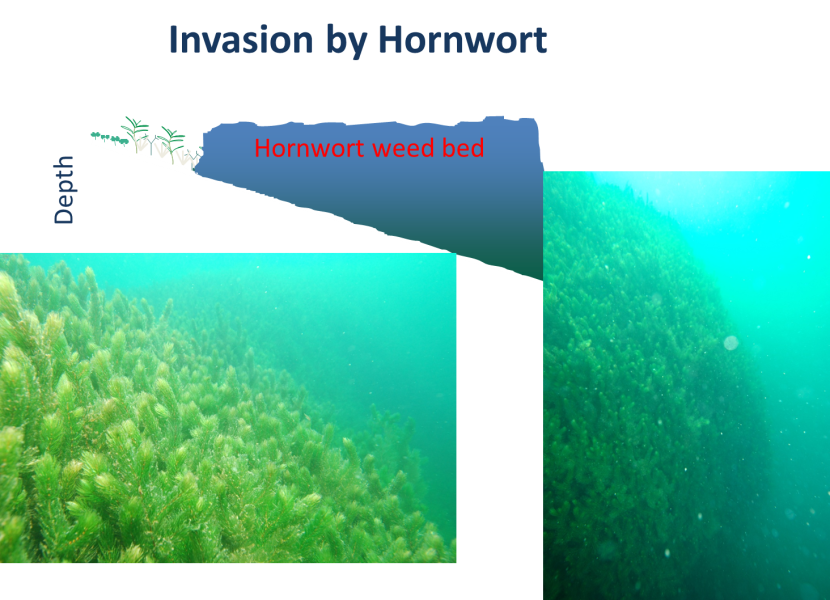A Ministry for Primary Industries-funded study has shown that grass carp, in enclosures, can be used as an effective means of controlling invasive plant species in our waterways.
The problem
Invasive aquatic plants pose a significant threat nationally to our lakes and rivers, choking our waterways. Hornwort – Ceratophyllum demersum – is one of the invasive aquatic plants being targeted for eradication.
It was first recorded in the field in New Zealand in 1961 in the Napier/Hastings area and is believed to have been an aquarium escapee. It has subsequently become widely distributed in the North Island. Dispersal is via fragmentation and people although, as a result of the National Interest Pest Response programme run through MPI, South Island incursions have been eradicated, there is still a clear need to control existing North Island populations in many places.
The solution
Grass carp - Ctenopharyngodon idella – an herbivorous fish from the Amur River region of China, have been successfully used previously to control these plants. While they are an effective bio-control option, their use comes at a cost: large numbers of fish may be required, which may remain in the waterway until they die (they do not form self-sustaining populations in our waterways). In addition, the carp eat desirable, non-target plant species too. Here we propose a method that uses grass carp in selected areas and minimises the often undesirable aspects of a general release of these fish into a lake.
Caging grass carp has been proposed as a means of containing the number of fish needed to control invasive weeds, thereby focussing the grazing pressure of the fish in a 'mob-stocking' approach and also minimising potential off-target impacts
In this trial, caged crass carp, in enclosures, were introduced into Lake Karapiro in order to remove hornwort.
The trial aimed to answer the questions, for a two-month timeframe:
- how many grass carp would be needed? What is the optimal stocking density of an enclosure?
- what is the feasibility and efficacy of such a solution?
As part of the study, the team built six large enclosures 2.5 metres deep and 6 metres wide, stocking them with different densities of grass carp.
The results
The study demonstrated that, if an unwanted aquatic weed is found at a sufficiently early stage, caged grass carp applied to the area of infestation can be an effective means of eradication.
For the first 3 weeks of the study, no change was observed. However, between weeks 5 and 7, there was a change in surface cover in some of the enclosures. By week 9, hornwort had been removed from the enclosures containing high densities of grass carp.
The optimal density of grass carp was found to be between three and five fish per enclosure, and enclosures were designed which prevented grass carp escape, but which did not harm the fish.
See our photo gallery telling the story of this research
External People Involved:
Andrew Bell (MPI)



